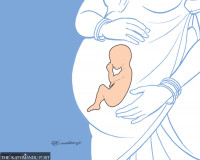Health
Toxic air shaving around five years off Nepalis’ lives, report shows
Nepal is world’s third most polluted country—behind India and Bangladesh—based on satellite-derived PM2.5 data.
Arjun Poudel
Polluted air has been cutting short the lives of Nepali people by around five years, a new report by the Air Quality Life Index (AQLI) that converts air pollution concentration into impact on life expectancy, shows. AQLI is a metric produced by the Energy Policy Institute at the University of Chicago.
Toxic air is deadlier than tobacco use and high blood pressure, which reduce life by 2.8 years and 1.7 years, respectively.
The reduction in life expectancy depends on where one lives—7.5 years in Mahottari, 7.4 years in Rautahat and Dhanusha, and 7.2 years in Sarlahi and Bara districts. Likewise, the pollution has been shaving 6.7 years off the lives of people residing in Siraha, and 6.2 years in Saptari and Rupandehi districts.
These districts lie in southern Nepal and share their borders with the highly-polluted northern plains of India.
“Some areas of Nepal fare much worse than average, with air pollution shortening lives by 6.8 years in the nine districts with the highest concentration of particulate pollution,” reads the report. “If Nepal were to reduce particulate pollution to meet the WHO guideline, residents in the mid and eastern Terai region—where nearly 40 percent of Nepal’s population resides—would gain 6.5 years of life expectancy. In the capital city of Kathmandu—Nepal’s most populous city—residents would gain 3.5 years of life expectancy.”
PM 2.5 refers to particulate matter (solid or liquid droplets) in the air that is less than 2.5 micrometres in diameter. It is among the most dangerous pollutants that can get past the nose and throat to penetrate the lungs and even the bloodstream. PM2.5 particles are small and are also likely to stay suspended in the air for long, increasing the chances of people inhaling them.
Every year, air quality in the winter deteriorates in Kathmandu Valley and other major cities in the southern plains, leaving the public gasping to breathe clean and safe air.
Nepal is the world’s third most polluted country based on satellite-derived PM2.5 data, which is at 51.7 micrograms per cubic metre, according to the report unveiled on Tuesday. Bangladesh tops the world in the most polluted countries’ list, whose PM2.5 data is 74 micrograms per cubic metre, followed by India’s 58.7.
South Asia is home to the world’s four most polluted countries and nearly a quarter of the global population. In Bangladesh, India, Nepal and Pakistan, the AQLI data reveal that residents are expected to lose about five years of life expectancy on average, if the current levels of pollution persist. Since 2013, about 59 percent of the world’s increase in pollution has come from India alone, according to the report.
“South Asia accounts for more than half, 52.8 percent, of the total life years lost globally due to high pollution,” the report stated. “The toll is even greater in the most polluted areas.”
The report stated that most people live in areas where the annual average particulate pollution level exceeds the WHO guideline of 5 micrograms per cubic metre.
Particulate pollution has increased over time. From 1998 to 2021, average annual particulate pollution increased by 75.2 percent, further reducing life expectancy by 2.2 years.
Had pollution levels in 2000 remained constant over time, the residents in these countries would be on track to lose 3.3 years of life expectancy—not the 5.2 years that they stood to lose in 2021, according to the report.
In this region, the average resident is on track to lose about eight years of life expectancy if the pollution level persists. The region includes the capital city of Delhi, the most polluted megacity in the world with annual average particulate pollution of 126.5 micrograms per cubic metre—more than 25 times the WHO guideline.
Experts say human behaviour of burning waste materials, brick kilns and construction works, vehicle emissions, use of coal, and animal dung for cooking, among others, contributes to bad air.
“Even if we cannot do everything at once, we can stop open burning, promote clean energy, and cut vehicle emission,” said Bhusan Tuladhar, an environmentalist. “We can reduce indoor air pollution by raising awareness and provide alternatives to the people.”
Nepal had the world’s highest age standardised death rates for chronic lung disease caused by air pollution in 2019: 182.5 per 100,000 population, with 3318.4 years lost to ill health or disability.
The age-standardised death rate indicates the number of deaths per 100,000 persons of the mean population, when the age structure is kept calculatorily unchanged during the whole reference period.
Doctors say air pollution is known to cause various respiratory illnesses. Poor air quality can cause short- and long-term effects on public health. Bad air quality can lead to pneumonia, bronchitis, conjunctivitis, skin allergy, stroke, and heart problems in the short term, and ulcers and cancer of the lungs and intestine, kidney disease, and heart problems, in the long run.




 6.84°C Kathmandu
6.84°C Kathmandu














